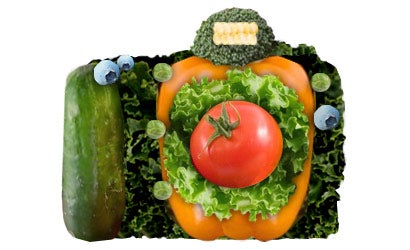The Hungry Eye
Eating your way to better pictures.

If you can’t see it, you can’t shoot it. Though the eyes and brain make up only about two percent of your total body weight, they eat up 25 percent of your nutrient load. Eyes are thirsty sponges of whatever gets near them, so expect to triple the risk of cataracts and macular degeneration if you smoke, and beware of too much yakking on mobile phones. Cell phone radiation has been shown in scientific studies to damage the cornea, lens, and retina of the eyes of mammals.
The easy way to maximize eye health is to eat right, though the National Eye Institute’s Age-related Eye Disease Study (AREDS) has shown that taking a specific formulation of antioxidants and zinc every day can help reduce the risk of macular degeneration by at least 25 percent. Here it is, straight from the Feds-
500mg vitamin C
400 IU vitamin E
15mg beta-carotene, or 25,000 IU vitamin A
80mg zinc oxide
2mg copper, as cupric acid
Eating and drinking for your eyes involves getting more than enough-six or seven milligrams per day-of the plant pigments lutein and zeaxanthin. Taking lutein supplements hasn’t proven effective, though moderate amounts of red wine consumption have been linked to lower risk of age-related eye problems. Food sources of anti-oxidants are always best.
| The photographer’s daily feast should include: | For beta-carotene: | For zinc: | ||
| Spinach | Carrots | Oysters | ||
| Swiss Chard | Sweet Potatos | Lobster | ||
| Bok Choy | Mangos | Chicken | ||
| Collard Greens | Tomatos | Beef | ||
| Corn | Orange Bell Peppers | Pork | ||
| Peas | Berries | Lentils | ||
| Avocados | ||||
| Kale | ||||
| Broccoli | ||||
| Tangerines | ||||
| Zucchini |
A word of caution about medications: most of them have ocular side effects. Benadryl can cause retinal bleeding, Prozac can cause eye pain and cataracts, and Pepcid may cause internal eye bleeding. Even Rogaine can decrease visual acuity. The bumper sticker lesson for photographers: stuffed-up, bummed-out, dyspeptic baldies who eat right do it better.